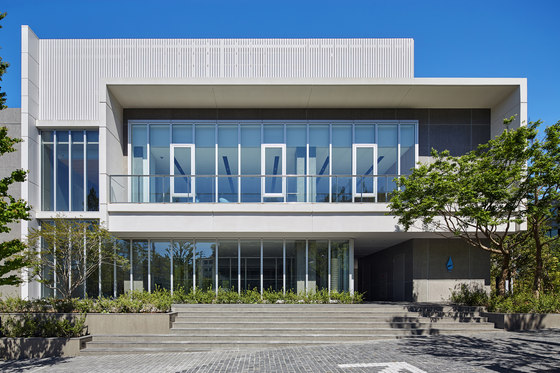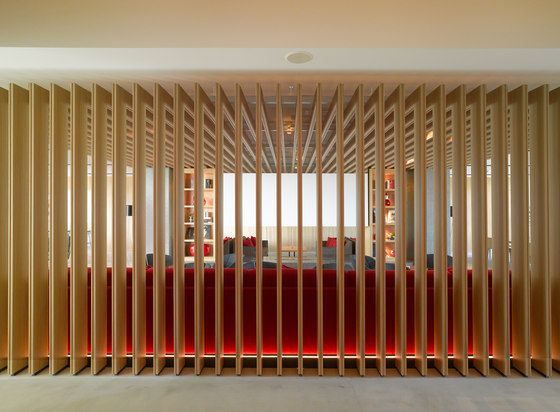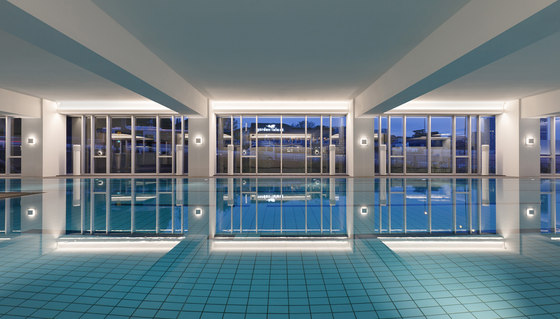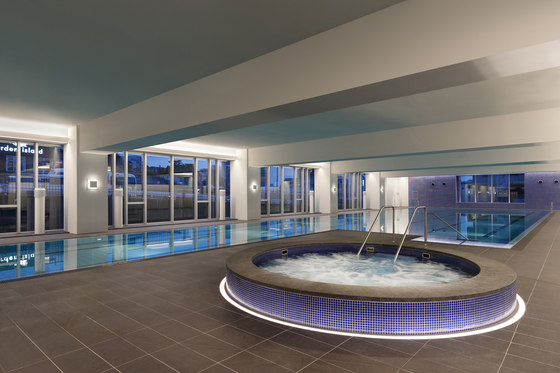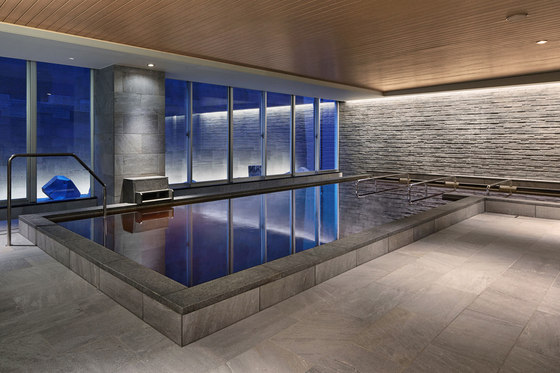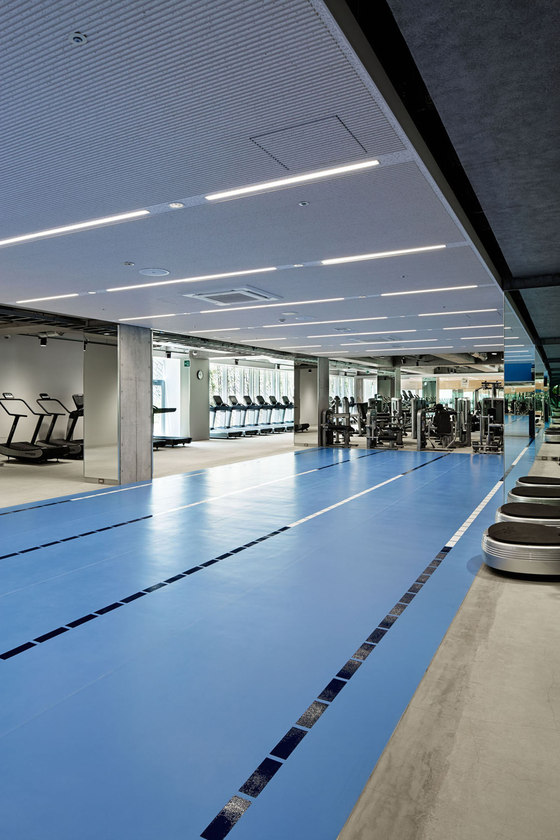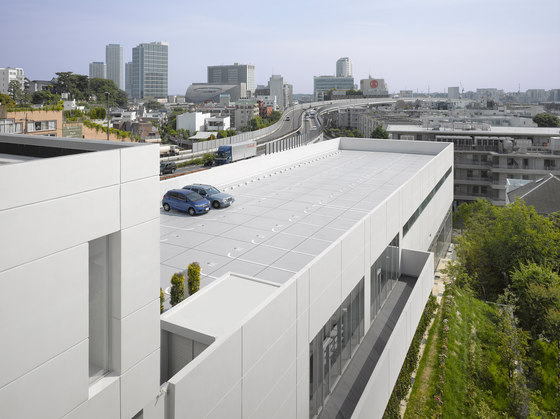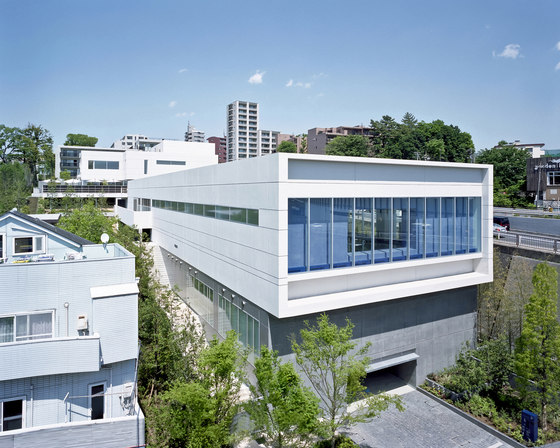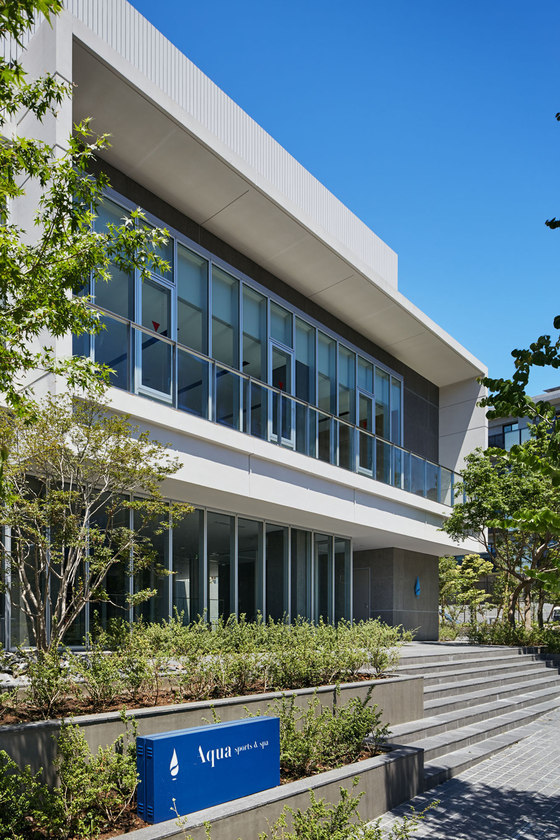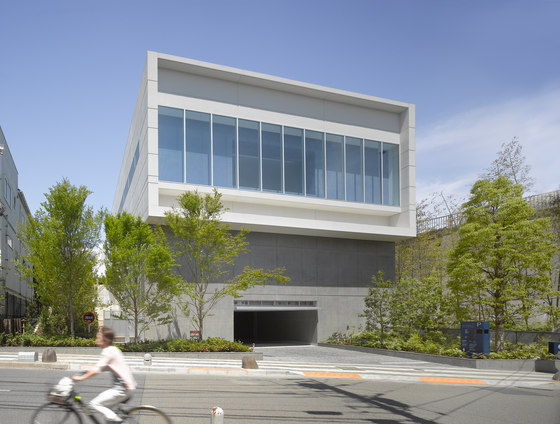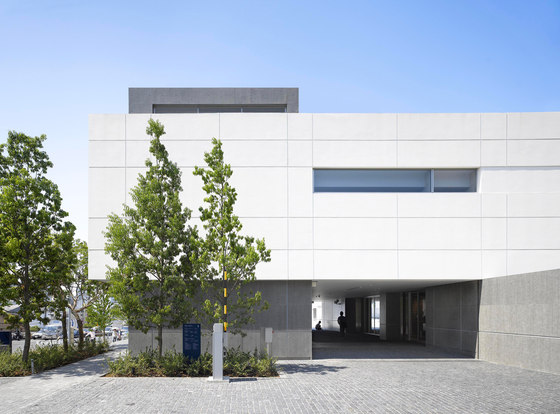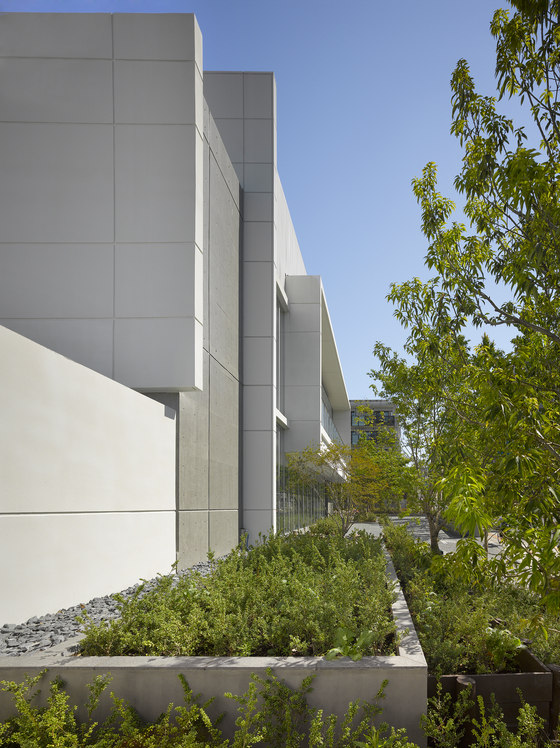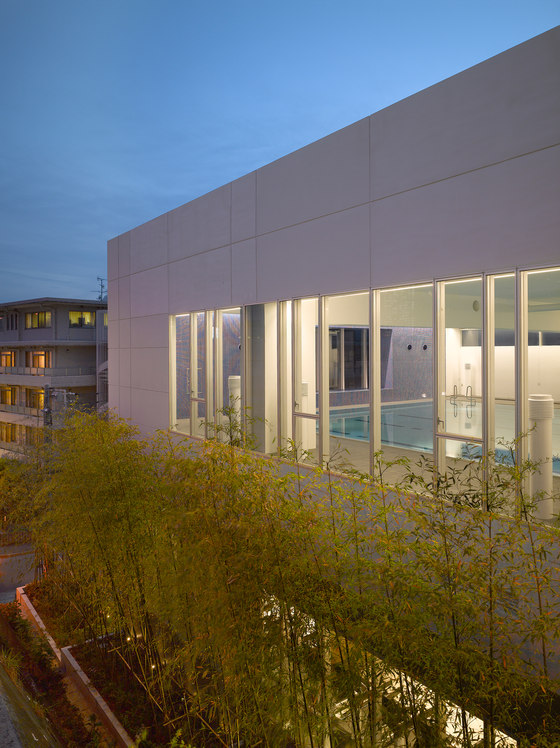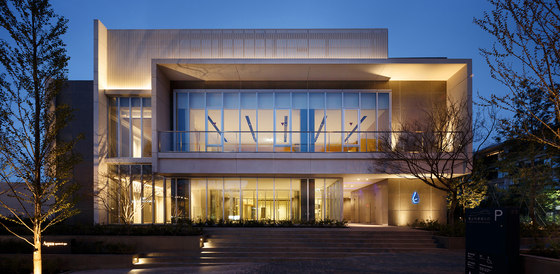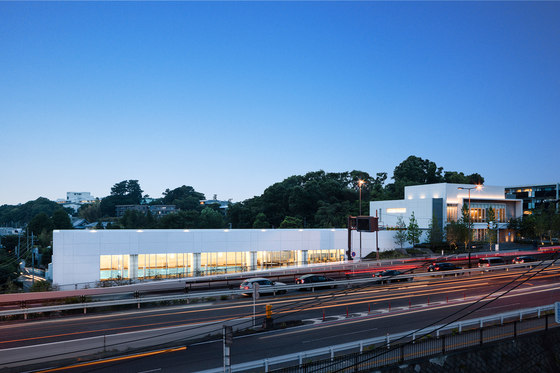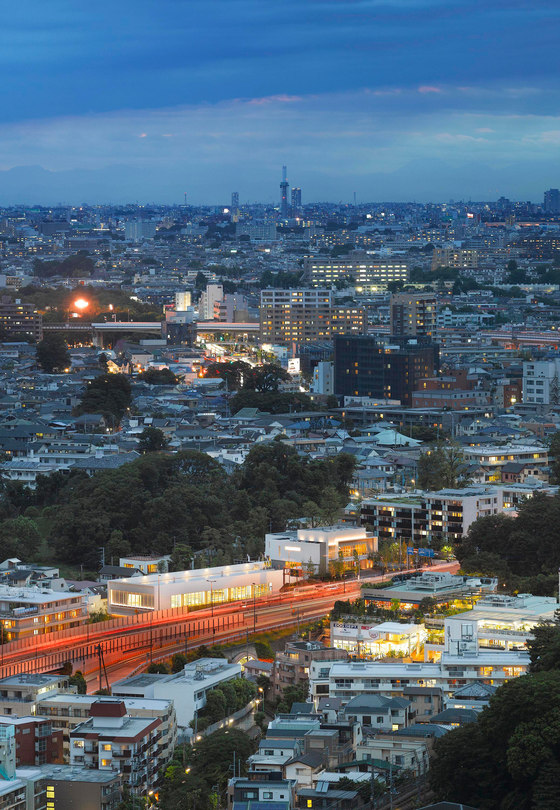This innovative building replaces the original Seta Sports Connection built in 1982, which was one of the first membership fitness clubs in Tokyo. The new six-story, 6,000 square-meter facility accommodates the private club's new emphasis on personal sports training, Japanese bathing and social activities. Designed in a striking minimalist aesthetic, Aqua Sports & Spa is the first project to be completed by COE Architecture International in Japan. The significance of the new Aqua Sports & Spa draws on a sensitivity Christopher Coe developed early in his career as a designer with celebrated architect Richard Meier.
Embracing the project’s complex urban site and varied program, the architect explored Western and Japanese concepts of spatial definition and materiality. Although a private club, the design intent was to create a transparent building with a welcoming and public presence, one with a serene and refined demeanor in sharp contrast to the chaotic surroundings of Tokyo. The design echoes an ancient calmness in opposition to the frenetic context.
The building is located on a steep hillside site, which was once part of a Tokugawa country estate containing onsen springs, rich forests and a spectacular view of Mt. Fuji. Today the site is bordered by a large highway, apartment buildings and small houses. But there remain large pockets of trees on both sides of the highway, which became primary considerations in the building design.
The building is comprised of spaces serving both the sports and social functions of the club. Fitness facilities include the only private 50-meter swimming pool in greater Tokyo, as well as a fitness gym, locker rooms, spa lounges and men's and women's showers and Japanese baths. The social facilities include a lounge, bar, dining room and a public cafe with outdoor terrace.
Aqua Sports & Spa focuses on high-level personal service for its members and the building design needed to bridge the wide gap between a utilitarian fitness club and a luxurious hotel. Programmatically the club functions are separated into sports and social spaces. Each assemblage of spaces is housed separately in white or dark gray concrete volumes which vary in scale related to their function.
The pool is enclosed in the largest white volume and raised in the air level and parallel to the adjacent highway. Enormous windows allow both private swimmers and passing pedestrians to visually engage each other from only 2 meters away.
At the upper end of the site a smaller white volume sits perpendicular to the pool volume. It contains the member’s lounge which floats above a clear glass box enclosing the ground floor entry lobby and public café. The upper lounge is totally transparent at its east and west ends to take advantage of the unique tree-top views of the historic site. The centerpiece of the lounge is a modern pavilion of wood slats defining the main seating area and fireplace within the larger lounge space. A driveway slips under the elevated lounge and between the entry and café, providing access to the roof-top parking, similar to Corbusier’s Villa Savoye.
Expressing internal functions within a refined massing of varying scale, the design negotiates the complex site and blurs the traditional boundary between private and public spaces and activities.
COE Architecture International
Contractor/Engineers/Executive Architect: Tokyu Construction Company
Interior Architect: COE Architecture International
Interior Designer: ILYA Corporation
Café Interiors: Seshimos Architects
Lighting Designer: SOLA
Landscape Architect: SOLA
Graphic Designer: Artless, Inc.
